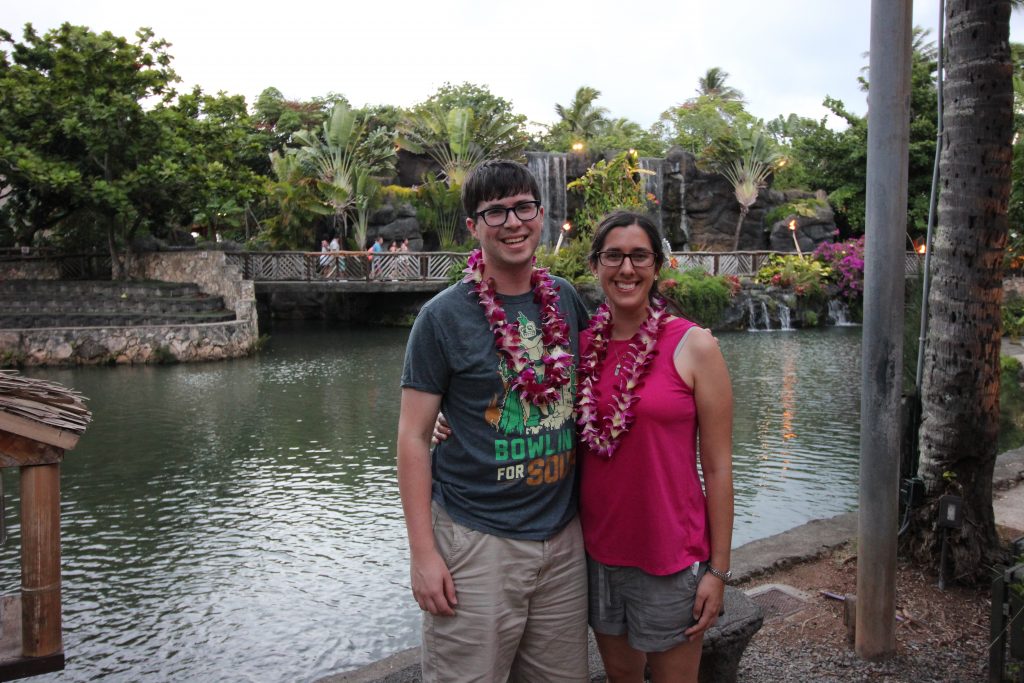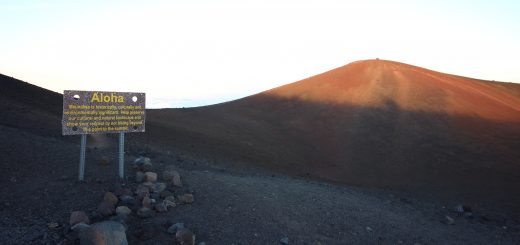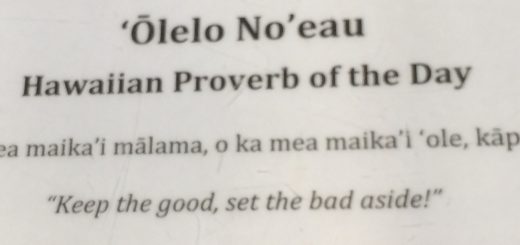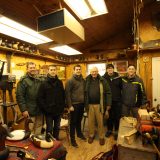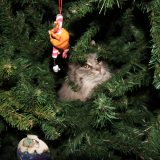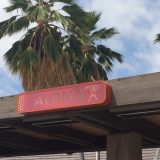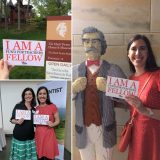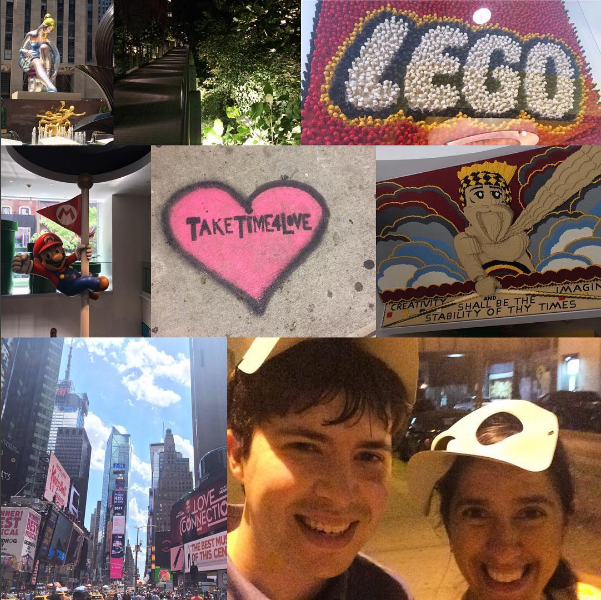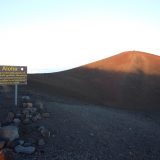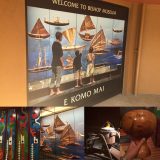Bishop Museum and Polynesian Cultural Center
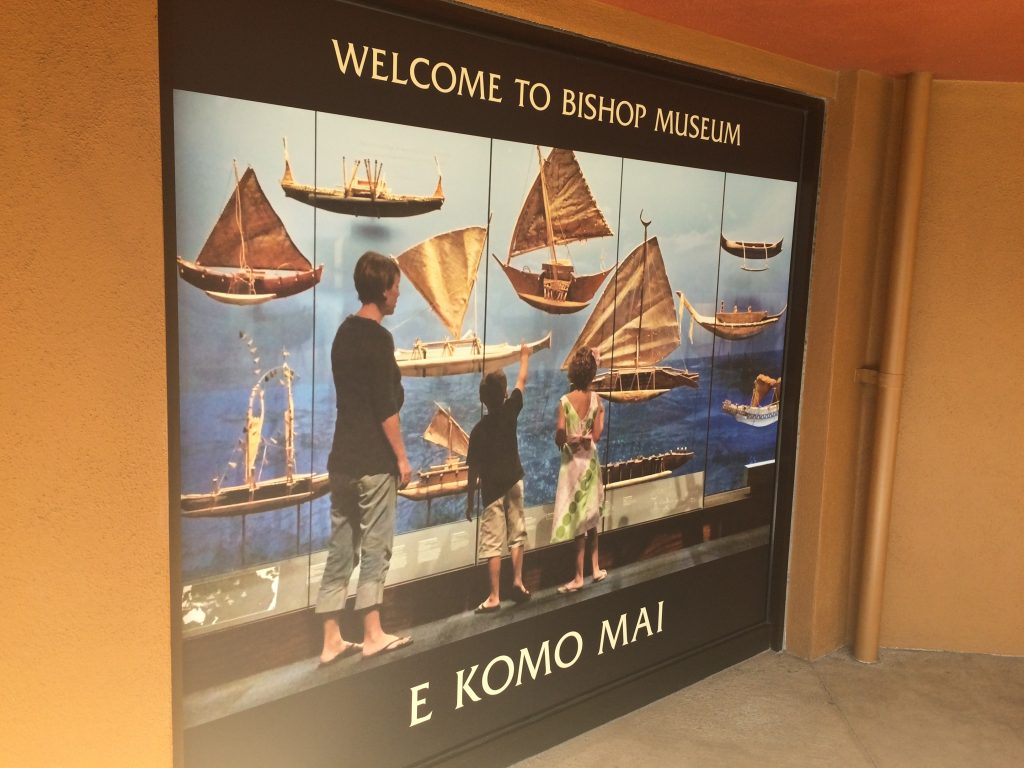
Today I was lucky enough to get a personalized tour of the Bishop Museum (named after Princess Bernice Pauahi Bishop) from my friend Jason, a science educator at the museum. He took us through the gallery Hawaiian Hall, the first floor of which represents the realm of Kai Ākea. This floor represents the Hawaiian gods, as well as the legends, beliefs, and lifestyle of Hawai‘i before contact with non-native people. On this floor, I was able to learn about many Hawaiian deities that I’ve heard about during my time in Hawai’i as well as some new gods and goddesses that I’ve never heard of before! The exhibits even had examples of artifacts that resembled those thought to be used by the gods and goddesses. It was very cool, and I loved seeing physical examples of artifacts as well rather than simply looking at drawings.
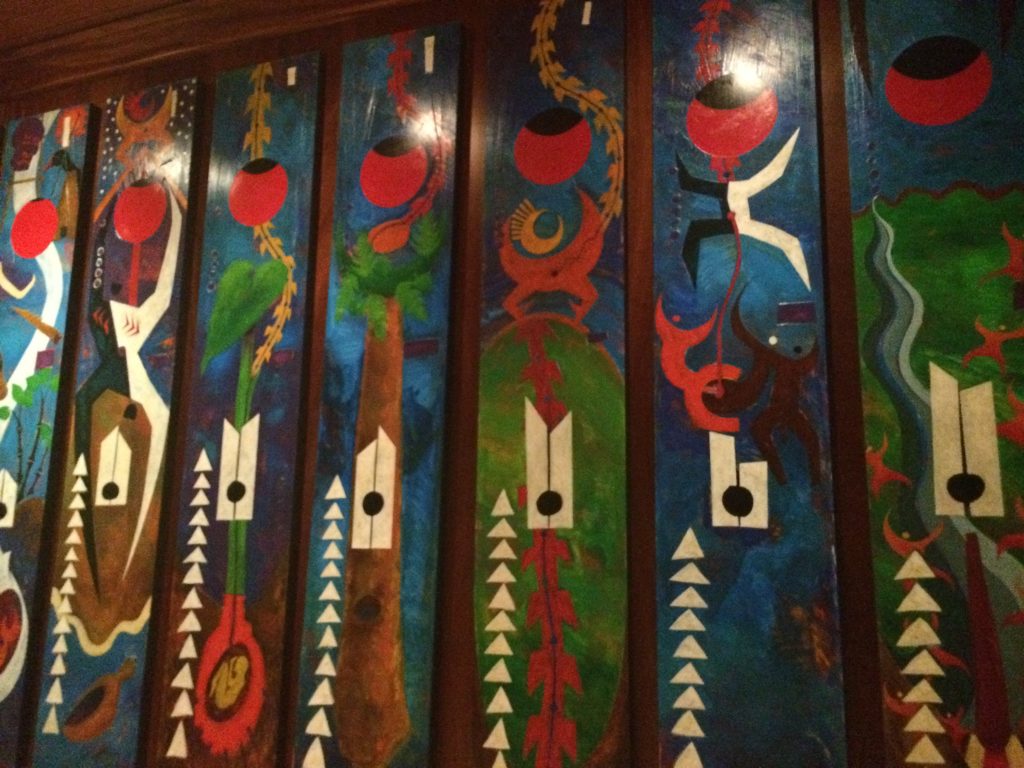
Panels telling the history of Hawai’i.
One of my favorite deities were the mo’o , which were giant 30-foot tall lizards who were guardians of waterfalls, springs, fishponds, and other areas of water. The mo’o , who were generally female, predate Pele and her family and are said to challenge even the other gods who entered their territory and wahi pana, or sacred places, often leaving deep cuts in the mountain terrain during their battles. Kūpuna, Hawaiian elders, say that to this day mo’o reside in bodies of water and that to check whether a place is safe, you have to place a leaf on the water’s surface. If the leaf floats, it’s safe to swim. If it sinks, a mo’o lives in the water. The imagery created by stories of the mo’o left me with such a vivid mental image of these giant ancient lizards dutifully protecting their sacred land from trespassers. Makes me wonder… could the Loch Ness Monster be some sort of mo’o? 🙂
Wao Lani, the third floor of Hawaiian Hall, had stories of Hawai’i’s history ranging from the time of Hawaiian ali’i (royalty) through Queen Liliuokalani’s abdication of the throne in 1895 after the overthrow of the monarchy to Hawai’i becoming the 50th US state on August 21, 1959. It was very interesting reading through the royal lineage of Hawai’i and the history of the kingdom becoming a part of the United States.
In Pacific Hall, Jason showed us cultural artifacts such as artwork and model canoes, including a model of a fishing hook like the one used by the demigod Maui to pull the Hawaiian islands from the sea.
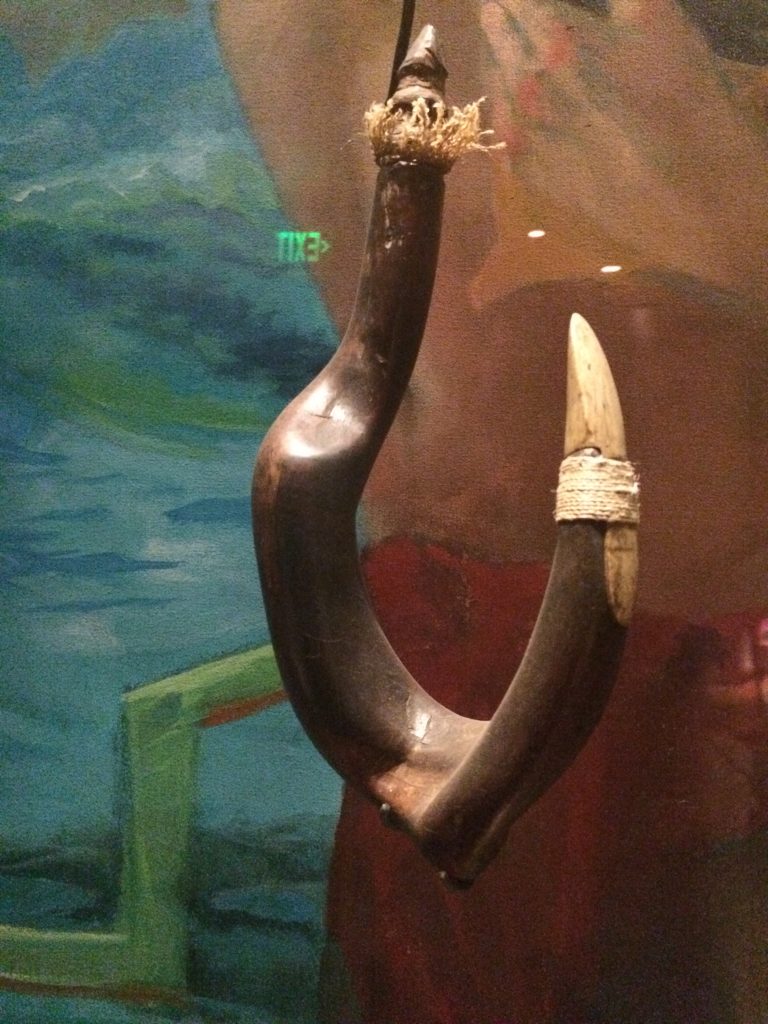
Jason also took us into the science education building where we were able to check out a model of a volcano, and I was able to sit on a giant snail (because, really, who doesn’t want to do that?).
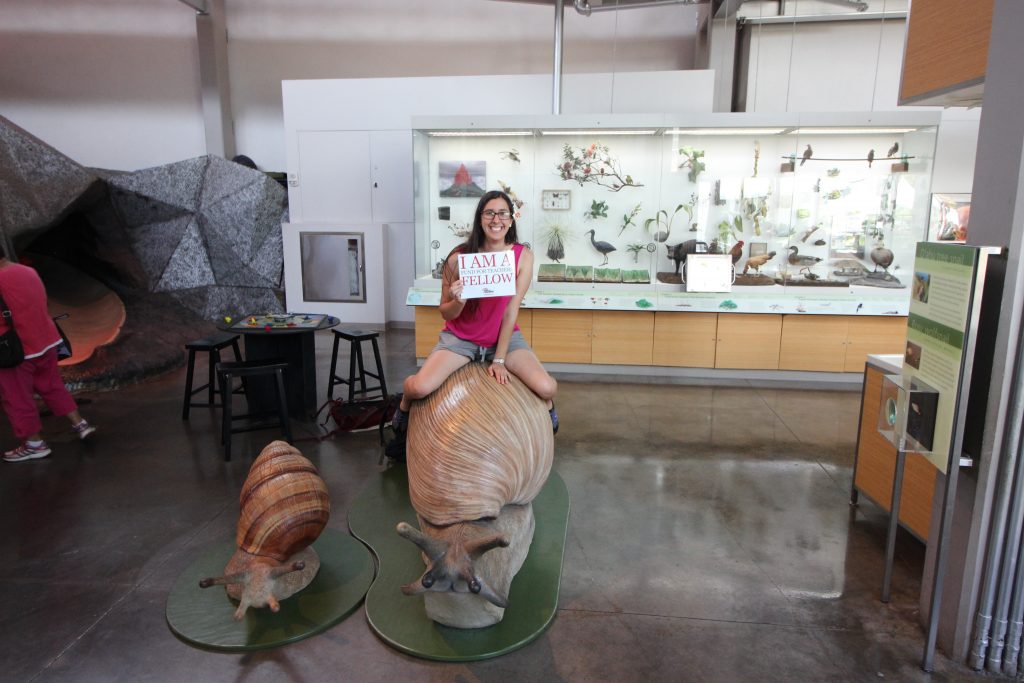
After our visit to the Bishop Museum, we went to the Polynesian Cultural Center to see examples of the Polynesian nations of Fiji, Hawai’i, Samoa, Aotearoa (New Zealand), Tahiti, and Tonga. We were able to see dances such as traditional and modern hula dances at the Hawai’i exhibit and the Maori war dance haka in Aotearoa, as well as play some traditional Hawaiian and Aoteroan games. In Samoa we watched a performance of Samoan slap dancing and a demonstration of making fire and cracking open coconuts without modern tools.
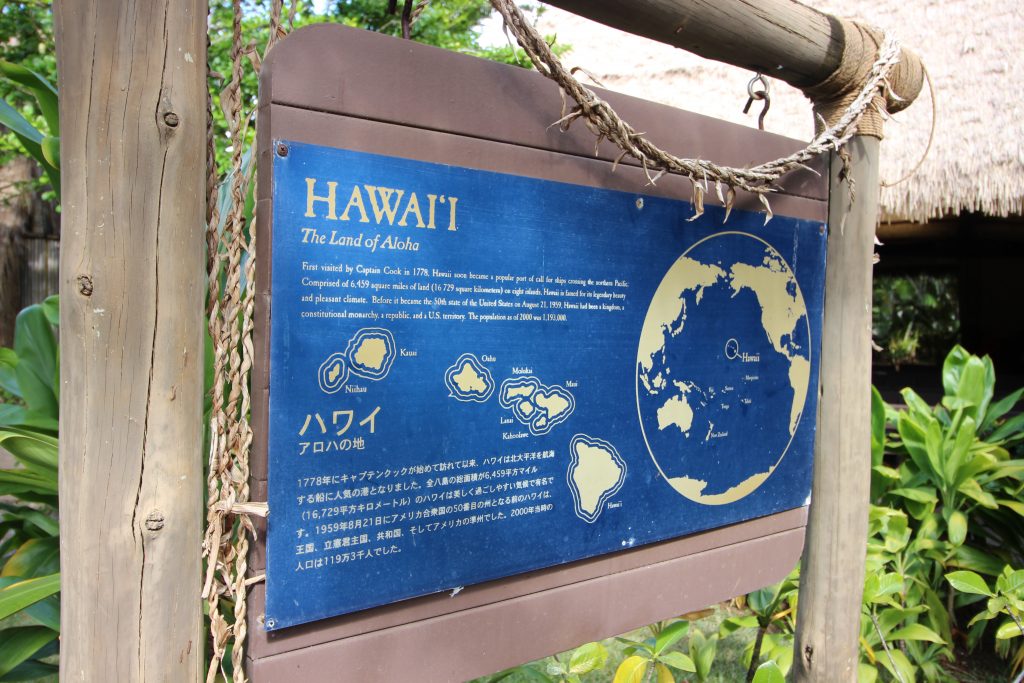
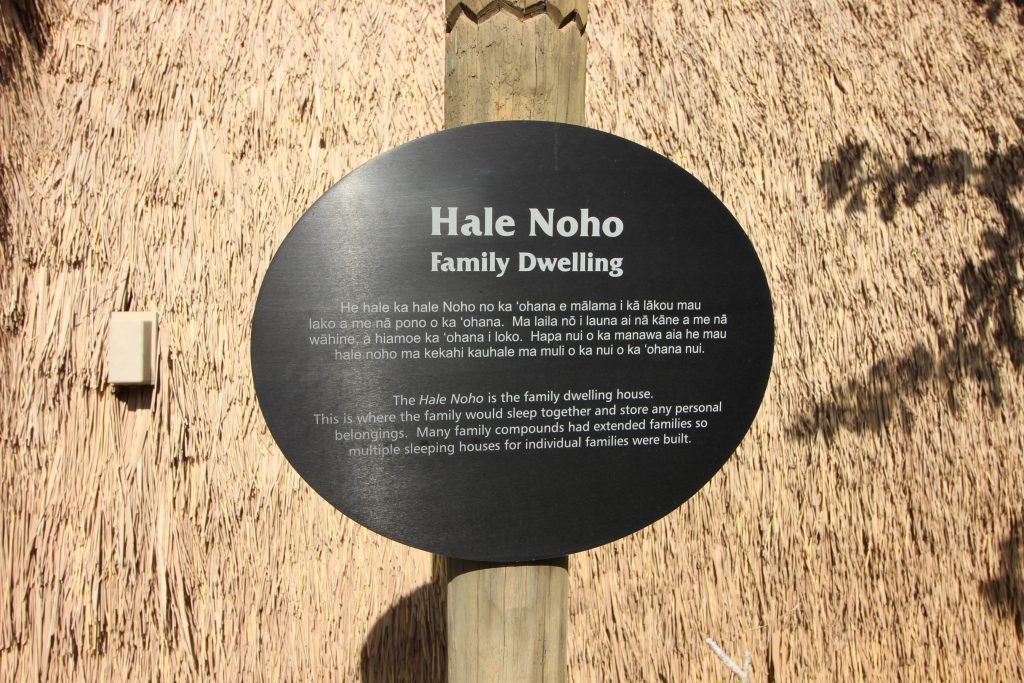
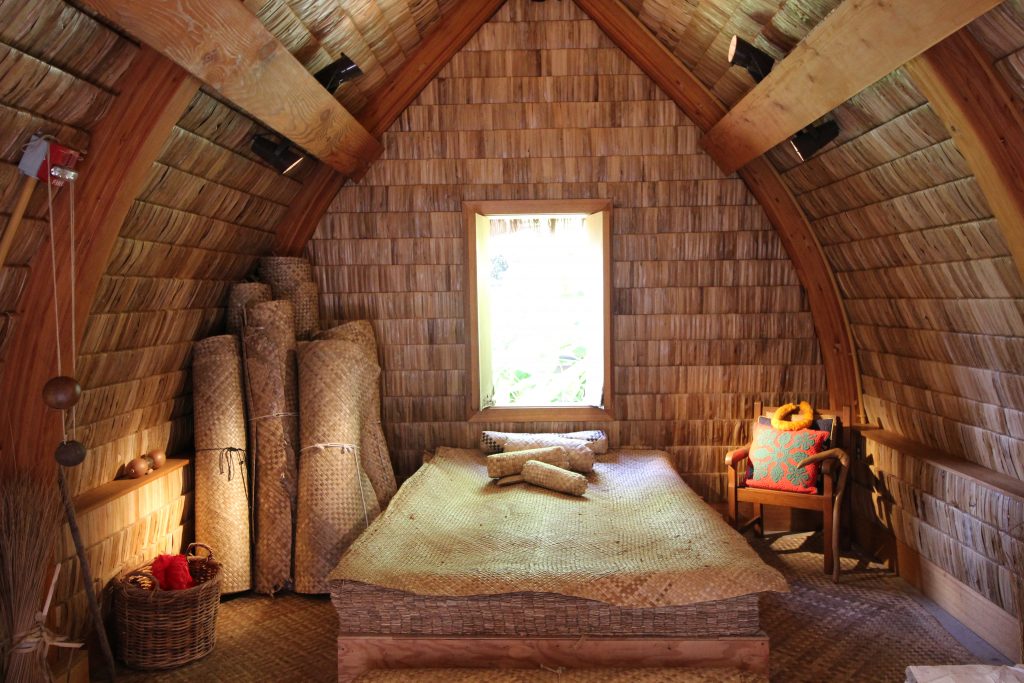
Example of a Hale Noho, or family dwelling.
That night, Drew and I attended another luau, and it was interesting comparing the differences and similarities between this performance and the one we saw last night. I wish there had been more examples of traditional hula, as many of the dances were modern hula set to music. After the luau, we went to see a performance of the Polynesian Cultural Center’s Ha: Breath of Life. This show tells the story of a Polynesian man’s life from birth to having his own child with each stage of life taking place in a different Polynesian nation, complete with examples of dance, traditions, and clothing.
One criticism I have of the show is that it appeared white-washed. For example, it seemed as if the story was supposed to take place hundreds of years ago, yet the performers portraying the Hawaiian natives wore white polo shirts under their costumes. Jason told me that this is a common criticism of the show, along with the fact that there is no real way to tell the time period of the villages within the Polynesian Cultural Center. It’s impossible to tell whether the villages are supposed to portray current life or life hundreds of years ago or any time in between.
Taken with this in mind, though, visiting the Polynesian Cultural Center was an interesting way to become immersed (at least superficially) in the ancient Hawaiian culture I’ve been learning about.
